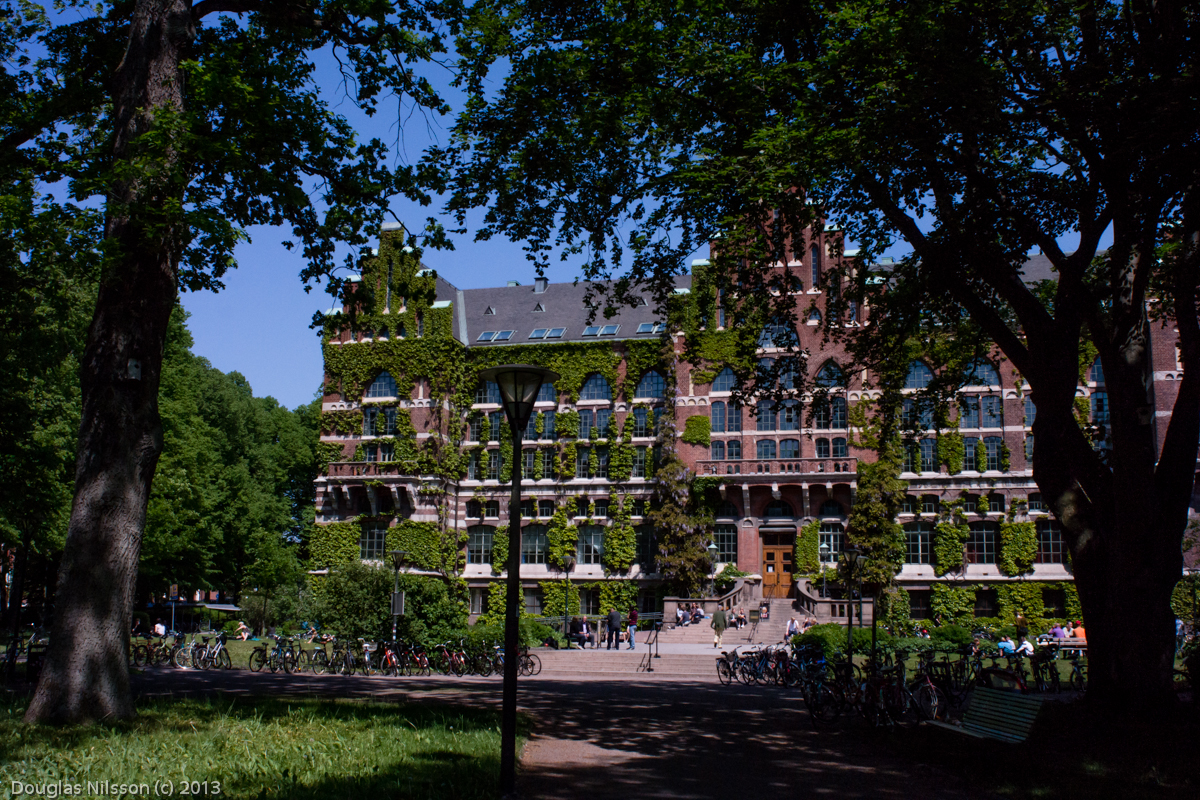 |
| "I should have brought the manual!" |
2 June 2013
Konica Hexanon AR 24mm f2.8 on the Samsung NX20
Not surprisingly this turned out to be the most easily used street lens, as it corresponds to about 35mm focal length on a 24x36mm film camera, and comes with a deep depth of focus. I mostly put it to f8 or f11 and set the focus distance to 2m and everything between 1m and infinity should be sharp. Having read the camera manual on the train and discovered that I should be able to shoot in aperture priority, the combination now turned out to be a good snap-shooting camera. Of course, this isn't real "aperture priority", since I'm meeting closed down, but on the other hand, the electronic view finder does not go dark as the optical viewfinder does in a similar situation (like when shooting with m42 lenses on a Pentax DSLR). That is one point to the EVIL Samsung relative to the DSLR Pentaxes (or any DSLR actually). Here are now some examples from central Lund (old University city in southern Sweden):
Subscribe to:
Post Comments (Atom)

















In order for the In Body Image Stabilization to work, Lenses need to have electronic contacts which communicate with the camera so that it knows on what focal length you are working on. Unfortunately, this is not the case when you mount legacy glass on mirrorless bodies. This i have tested on Sony Alpha Bodies (Not NEX), Oly four thirds and mft bodies.
ReplyDeleteThank you for your comment Kamran. I understand it as you want to say that my whish for sensor based image stabilizatoin on the Samsung NX does not apply because I use old mechanical lenses with adapter. This isn't correct, thought I can understand that you arrive to that conclusion if you experience is limited to Sony. Pentax allow image stabilization for any lens, however old and non-electronic it may be. As soon as the camera conclude that you have mounted a lens without electronic info on the focal length, it prompt you to enter the focal length on the display (you simple swap through a long list of clasical focal lengths and pick the nearest...it goes quite rapidly). This works the same way on both Pentax DSLR and Pentax mirror-less cameras (K-01 and Q). This is what I wished for on the Samsung NX. Why Sony doesn't offer the same possibility on their cameras I don't know. But a guess would be that it is simply true as people say that Pentax are very concerned with comming up with user-friendly solutions, especially to please the enthusiasts, and very good at tweaking different functions one step further than the competition.
ReplyDeleteThe 24mm/2.8 Hexanon AR behaves like a 24/2.8 onto a 35mm Film or DSLR/DSLM "FullFrame" Sensor Camera - it's a 35mm/2.8 on APS-C/DX x1.5 Cropfactor DSLR/Mirrorless Cameras. I use mine onto a Sony A3000 DSLM, the Focus Peaking Feature works very well. Nice Shots.
ReplyDeleteI don't get your point Marc. It IS still a 24mm focal length lens on a full fram, APS-C or whatever. Format doesn't change the lens. So it ISN'T a 35mm on a APS-C. It behaves (in terms of image angle) as how a 35mm (or to be more precise a 36mm) lens would behave on a full frame or 35mm film camera. In terms of focal length it is still a 24mm on an APS-C.
ReplyDelete